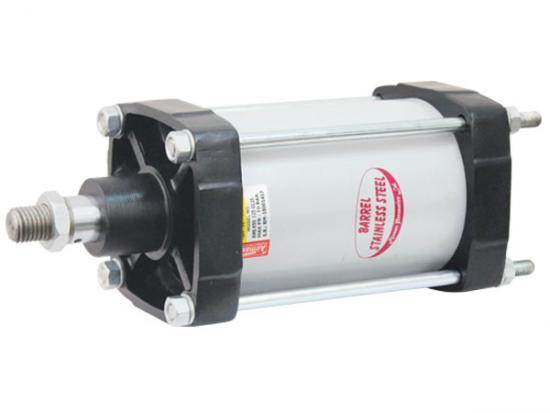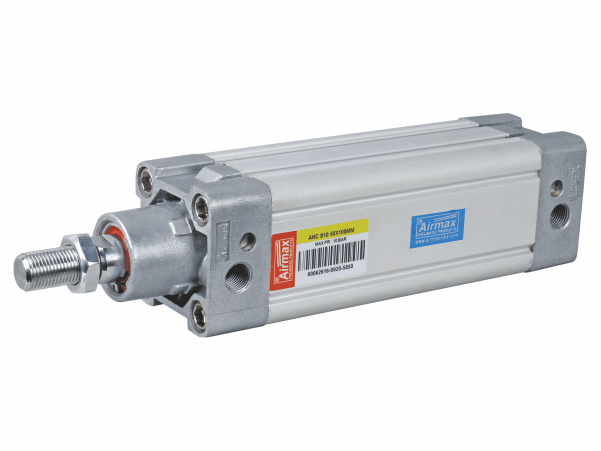|
Pneumatic cylinders are mechanical parts that give straight power to different gadgets and frameworks. They produce the power by applying packed air aside from a fixed barrel and depleting it from the opposite side. This activity causes the cylinder/pole gathering contained inside to broaden or withdraw. It is vital to accurately introduce pneumatic cylinders. In any case, there is a gamble of erroneous or untrustworthy activity and untimely disappointment. This is particularly valid for hydro-pneumatic cylinders, which create high powers in a little bundle. Thusly, the inaccurate establishment can prompt extreme hardware harm and additionally administrator injury. Underneath, we examine how to appropriately introduce a pneumatic cylinder. Furthermore, we feature the significance of testing the framework before placing it into activity and the precautionary measures to take while performing establishments. HOW DO I INSTALL A PNEUMATIC CYLINDER PROPERLY?
There are two fundamental fixing focuses to consider while introducing a pneumatic cylinder: the body and the cylinder bar end. How these focuses are fixed relies upon the application. In static applications, the cylinder can be mounted to the machine seat and fixed unbendingly to its construction. Both pneumatic and hydro-pneumatic cylinders are commonly mounted with a rectangular front rib mount (likewise in some cases called an MF1 mount or FH mount) or tapped openings toward the front of the face (additionally in some cases called an MR1 mount or UH mount) because of the great powers created. In any case, a few pneumatic cylinders utilize a semi-unbending trunnion mounting technique (MT1) that uses body supports or turns and clevis pins. It permits them to turn as they follow the expansion and withdrawal of the cylinder bar. In uncommon cases, a side carries mounting technique (MS2T mount) might be utilized. In complex linkage applications, the cylinder should have the option to turn on its mountings. There are a few answers for this mounting prerequisite. For instance, a front clevis, focal trunnion, or back pivot can be utilized on the body of the cylinder to permit the cylinder and burden framework to accomplish various levels of equilibrium. On the other hand, a clevis, front pivot, or general eye can be utilized toward the finish of the cylinder bar to mount turn connections. If a trunnion mounting technique is picked, it is fundamental to guarantee the cylinder can sway openly on the mountings and the line associations can flex when being used. A portion of what to remember while introducing a pneumatic cylinder include:
For what reason SHOULD I TEST THE SYSTEM? Before placing a cylinder into activity, it is essential to test the whole framework to guarantee the part incites with negligible obstruction and the bar encounters insignificant side stacking. Testing tasks can be directed by utilizing an adaptable carrier and blow firearm to check the cylinder is introduced appropriately and ready to move openly at the distributed least working tensions. For hydro-pneumatic cylinders, it is essential to test them in low tensions (approach and withdraw) without going into high tensions (escalation) to guarantee the tooling and by and large arrangements are adjusted accurately. These testing tasks should adhere to the maker's rules for sequencing the cylinder for approach, withdraw, and increase. WHAT PRECAUTIONS SHOULD I TAKE WHEN INSTALLING PNEUMATIC CYLINDERS?
0 Comments
A square pneumatic cylinder is a mind-boggling piece of gear with a genuinely lengthy life expectancy. Sadly, various issues can emerge because of inappropriate support, unfortunate establishment, and awkward fix. Most issues can be forestalled essentially by "perusing the manual". In any case, regardless of whether support is adequate, now and again blames happen that require fixing. We might want to share a couple of ways of forestalling pneumatic cylinder issues and staying away from exorbitant fixes. 1) Side Loading Quite possibly the most well-known reason for pneumatic cylinder breakdown is side stacking, which is when tension is applied horizontally to the cylinder pivot. This prompts lopsided cylinder and bars wear or breakage, seal disappointments, tube scoring, and numerous other mechanical issues. The way to forestalling side stacking is to guarantee the right establishment. It's critical to check the arrangement of the cylinder bar with its mating machine part. All cylinder mountings ought to be checked consistently. 2) Contamination Pollution happens either inside from the air supply or remotely from the climate. Kinds of defilement incorporate water, oil, and solids. Toxins can harm seals, plug holes, and degenerate surface completions. Forestalling tainting:• Solids - You can forestall solids tainting by keeping the producer's port plugs in working condition until fitting the framework with funneling. You ought to likewise eliminate all pollutants before interfacing with cylinder ports. A metallic wiper can eliminate enormous impurities from the pole. • Water - To keep harm from water, introduce spotless practiced steel bars and clasp or potentially apply unique coatings to the outer layer of the pneumatic cylinder. • Oil - To keep away from oil harm, pick seals viable with the oils utilized in the framework. Check with your parts provider to affirm similarity. 3) Poor Lubrication Pneumatic cylinder disappointment frequently occurs because of deficient cylinder seal oil. With unfortunate grease, seals ultimately dry out, prompting spillage and overheating. Seals ought to be re-greased up and supplanted routinely. You could likewise attempt "no-oil" cylinders or utilize an infusion lube framework. 4) Leakage At the point when appropriately introduced and kept up with, pneumatic cylinders shouldn't experience the ill effects of holes. Notwithstanding, following erroneous establishment, seal disappointment, or mechanical harm a hole might happen. High temperatures and mugginess can likewise influence the wear of a unique seal valve, in this way prompting spillage. It's feasible to forestall a brake issue through ordinary upkeep and ideal substitution of the barrel, bar, and cylinder seals. Take a look at the natural resiliences of a part before involving it in your application. 5) Operation Beyond Performance Range Working pneumatic cylinders past their presentation limits will undoubtedly prompt harm and untimely disappointment. To forestall such issues keeping the maker's functional guidelines is significant. If your gear is giving indications of strain or you realize it's been exhausted, it's vital to look at the bars and convey a visual wellbeing check. For future activities, the bar string size might be expanded. |
AuthorWrite something about yourself. No need to be fancy, just an overview. Archives
June 2022
Categories
All
|



 RSS Feed
RSS Feed
